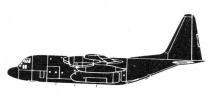Incident Overview

Description
The aircraft was operated by Skyways Express AB on its scheduled flight, JZ206, between the Stockholm/Arlanda and Gllivare. The co-pilot was the flying pilot for the flight and was sitting in the left seat as he was undergoing route training in connection with his upgrade to commander. The commander, who also was the route-training instructor, sat in the right seat for the flight. The flight to Gllivare was normal. The normal flap setting for landing is 25 degrees. However the pilots had agreed to perform the landing using a 35 degree flap setting for training purposes. When the aircraft was 40 feet (approx 12 m) above the runway the co-pilot commenced the round out prior to landing. The commander felt that the aircraft rounded out to high and was losing speed far too fast whereby he grasped the control column, pushed it forward and then released it. The aircraft levelled off for a short time and then sank rapidly from about 10 ft (3 m) above the runway, making firm contact with the runway. The co-pilot held on to the control column during the landing although he had interpreted the commander?s intervention as his taking control, despite his not reporting ?My controls?. Neither the commander nor the co-pilot felt it necessary afterwards to report the landing as being hard. No note was made in the aircraft log and no special inspection of the aircraft was asked for or done. The commander wrote in the co-pilots training syllabus that he should be more aware of rounding out too early during the landing. About a day later after the aircraft had flown six more flights, substantial structural damage was found to the aft section of the aircraft. The investigation has shown that the landing was made in a somewhat uncontrolled fashion and that contact with the runway was made with an unusually nose high attitude. Communication between the pilots during the landing sequence has also not followed standard procedure. The fact that the damage was in a vulnerable area and also was so visible indicates that there are shortcomings in the pre-flight inspection process. The accident was caused by a breakdown in communication between the pilots in connection with the landing. Additional factors that led to the outcome of the accident were the fact that the landing was carried out in darkness, that the co-pilot was not familiar with flying from the left seat and that the landing was made with a 35 degree flap setting.
Primary Cause
Failure to adequately communicate and coordinate during the landing sequence, leading to an uncontrolled maneuver and resulting in significant structural damage.Failure to adequately communicate and coordinate during the landing sequence, leading to an uncontrolled maneuver and resulting in significant structural damage.Share on:





